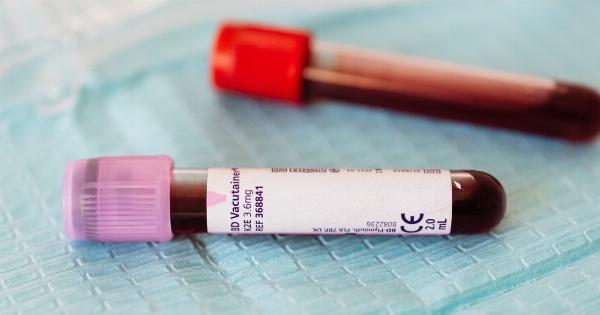Lou Gehrig’s Disease, also known as amyotrophic lateral sclerosis (ALS), is a progressive neurodegenerative disease that affects the nerve cells in the brain and spinal cord.
Hematology, the study of blood and blood disorders, plays a crucial role in monitoring the health and progression of ALS patients. Understanding the changes in blood parameters can aid in the diagnosis, prognosis, and management of this debilitating disease.
1. Importance of Monitoring Hematology
In ALS patients, monitoring hematological parameters is vital as it provides valuable insights into the progression and severity of the disease.
Changes in blood components can indicate potential complications, track response to treatment, and help in the early detection of secondary disorders that often accompany ALS.
2. Complete Blood Count (CBC)
The complete blood count, or CBC, is one of the most commonly performed hematological tests. It provides essential information about the cellular components of blood, such as red blood cells (RBCs), white blood cells (WBCs), and platelets.
Monitoring CBC in ALS patients enables healthcare providers to assess anemia, infection risk, and platelet dysfunction.
3. Red Blood Cell Parameters
Red blood cell parameters, including hemoglobin (Hb) levels, hematocrit (Hct), and mean corpuscular volume (MCV), can offer insights into the oxygen-carrying capacity of blood.
Decreased Hb and Hct levels may indicate anemia, which is often observed in ALS patients. MCV values help differentiate between different types of anemia, providing additional diagnostic information.
4. White Blood Cell Count and Differential
White blood cell (WBC) count and differential analysis are essential in monitoring the immune system function and detecting potential infections. ALS patients are susceptible to respiratory complications, pneumonia, and urinary tract infections.
An elevated WBC count, particularly neutrophilia, may indicate an ongoing infection, whereas a decreased count might indicate bone marrow suppression due to ALS or certain treatments.
5. Platelet Count and Function
Platelets are crucial for blood clotting and preventing excessive bleeding. ALS patients may experience platelet dysfunction, leading to an increased risk of bleeding or bruising.
Monitoring platelet count and function aids in assessing the risk of hemorrhage and guides treatment decisions, such as the use of anticoagulants or antiplatelet medications.
6. Coagulation Profile
The coagulation profile helps evaluate the clotting ability of blood. ALS patients may be prone to abnormalities in the coagulation system, resulting in an increased risk of deep vein thrombosis (DVT) or pulmonary embolism.
Regular monitoring of coagulation factors, such as prothrombin time (PT), activated partial thromboplastin time (aPTT), and international normalized ratio (INR), aids in identifying clotting disorders and guiding appropriate interventions.
7. Inflammatory Markers
Inflammation plays a crucial role in the progression of ALS.
Monitoring inflammatory markers, such as C-reactive protein (CRP) and erythrocyte sedimentation rate (ESR), can provide insights into the severity of inflammation and aid in the evaluation of disease activity. Regular monitoring of these markers helps healthcare providers assess the response to treatment and identify potential complications.
8. Nutritional Markers
ALS patients often experience weight loss and malnutrition due to swallowing difficulties and muscle weakness. Monitoring nutritional markers, such as albumin and prealbumin levels, helps assess the nutritional status and guide dietary interventions.
Maintaining proper nutrition is crucial in managing ALS symptoms and improving the overall quality of life for patients.
9. Blood Electrolytes
Imbalances in blood electrolytes, including sodium, potassium, calcium, and magnesium, can occur in ALS patients. These imbalances may result from muscle atrophy, renal dysfunction, or certain medications.
Monitoring electrolyte levels aids in detecting potential abnormalities and guiding appropriate interventions to restore the balance.
10. Biomarkers and Research
Ongoing research is focused on identifying specific blood biomarkers that can aid in the diagnosis and prognosis of ALS. These biomarkers may include neurofilament proteins, cytokines, and oxidative stress markers.
While still in the experimental stage, the discovery of reliable blood biomarkers has the potential to revolutionize ALS diagnosis, monitoring, and treatment.
Conclusion
Monitoring hematology in Lou Gehrig’s Disease patients is crucial for understanding disease progression, predicting complications, and guiding treatment decisions.
Regular evaluation of blood parameters provides healthcare providers with valuable information, allowing them to optimize patient care, manage symptoms, and improve overall outcomes for ALS patients.



























